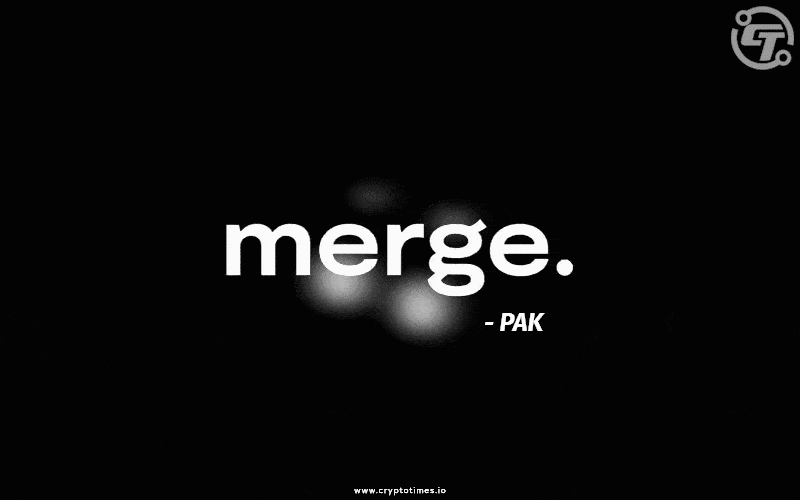The recent crypto crash has triggered the price variation in stETH:ETH pair, which was formerly pegged at 1:1 but is now depegged. The Aave protocol has had a whirlwind for quite some time now, with stETH tumbling against ETH at an alarming rate.
Amid the crypto slump, this news created FUD in the market as big venture capitals like Three Arrows Capital and protocols like Celsius Finance appear to be caught in the crosshairs of the liquidation risks.
All this can prompt a cascading effect in the market, creating quite a debacle among the crypto community. DeFi protocols including Aave and Maker are now planning to stop it from spiraling much lower.
Consequently, they have come up with proposals citing solutions, which we will discuss in this article. Along with that, we will also be shedding some light on how these proposed steps would impact investors, traders, and the crypto community at large.
How does Aave plan to Mitigate the risk of price deviation of stETH/ETH?
In recent months, stETH shot to prominence when it became one of the most popular collateral types on Aave. Many users began flocking towards Aave for depositing and borrowing ETH in exchange for stETH, which acts as collateral to borrow more ETH.
Since a large number of users were hoarding stETH to borrow more ETH, the risk posed by a stETH/ETH price depeg raised many eyebrows about where this might lead.
Aave’s risk assessment system, Gauntlet observed a huge spike in AAVE VaR due to volatility in the stETH price. This means that if the price deviates drastically or the asset “depegs,” AAVE could see a large number of liquidations.
Aave comes forward with a proposal to limit the risk of a liquidation that could negatively impact AAVE token holders and users after analyzing the entire scenario. Following are the pointers that Aave emphasized in its proposal.
Steps Taken by Aave
1. Freezing the stETH market
Freezing the stETH market will prevent new positions from being opened. It will also temporarily pause the stETH market except for people winding down their positions. This is critical because it allows them to proceed to the next step, which is to raise the liquidation threshold (LT) for ETH.
If Aave decides not to pause the market, users may enhance risk by initiating new positions that take advantage of the increased LT.
2. Increasing Liquidation Threshold
Increasing the Liquidation Threshold for stETH to 90% will provide existing positions with more breathing room for stETH/ETH price deviation and will make the protocol much more resilient to further depegs.
3. Pause ETH borrowing
With the changed LT, Aave can prevent existing positions from increasing their risk exposure. To execute this, it has decided to pause new ETH borrows from being opened.
Almost all ETH borrowing is recursive borrowing and there is a limited demand for ETH borrow, yet it’s still something users want.
Note that voting for this proposal has already begun and will end on June 17th. As of now, 12.05% of votes are in favor and 87.95% of votes are against the proposal, though the quorum has not been reached yet.
What impact would it have?
These proposed steps will prevent users from getting liquidated as the LT threshold has increased. Despite the fact that the proposal hasn’t passed till now, it seems to be perceived as a blessing in disguise for entities like Celsius which has taken a $100 million loan in DAI using stETH as collateral
On the other hand, Maker’s Risk Core Unit believes a proposal currently being voted on by Aave Governance poses an unacceptable risk to the Maker Protocol, if approved. However, MakerDAO is in no mood to take risks with all hands on deck.
As ambiguity around crypto credit has shrouded digital asset space, MakerDAO, the protocol behind the DAI stablecoin, voted on June 15 to temporarily halt Aave’s DAI Direct Module (D3M).
The move is tied to the fuss engulfing the Celsius network that suspended deposit withdrawals last week.
What is D3M?
The D3M is the Maker Direct Deposit DAI Module which is developed in cooperation with the Aave protocol. This module is a smart contract that offers Maker protocol to enforce a maximum variable borrow rate for the DAI market on Aave.
It does this by calculating the DAI supply required to decrease the interest rate down to the desired level. Following this, it mints that amount against the returned aDAI. All this process is carried out by a fully automated vault with a target interest rate specified by Maker governance.
In simple words, the D3M connected to Aave V2 generates and deposits freshly minted DAI to the Aave’s DAI lending market. By doing so, the D3M receives aDAI which will serve as the collateral of the previously minted DAI. This is how the Aave D3M acts as a Maker Vault backed by aDAI.
In this way, the D3M enables Aave to create DAI that can only be transferred to its DAI lending pool.
Why is MakerDAO disabling D3M?
The Aave-DAI pool seems to have enough reserves right now for MakerDAO to withdraw. If the DAI reserves become empty, any periodic DAI repayments from other borrowers will be gobbled up by bots and a protocol like MakerDAO will be locked in for a long time.
To prevent itself from the risk posed by Aave’s proposal which intends to increase the Liquidity threshold, Maker has introduced an executive proposal that disables D3M.
Under this, Maker has proposed to disable the D3M module so that Aave can no longer generate DAI at will, allowing it only to pay off existing debts. The following changes will be made if this executive proposal passes.
The Aave DAI D3M Target Borrow Rate (bar) will be set to zero. This suggested that the Aave D3M will utilize its full debt ceiling which is a pre-programmed state in the D3M code that sets the vault to unwind only. The change will be in effect on June 17.
The proposal is of temporary nature. If this executive proposal does not pass within 30 days, it will expire and can no longer have any effect on Maker Protocol.
Aave has not responded to this proposal by Maker yet. The decision was urgently proposed by Maker’s Core Risk Unit, which showed concern over Celsius borrowing $100M worth of DAI using D3M with stETH as collateral.
While Celsius previously amassed billions in customer deposits, it now appears to be struggling to remain solvent after halting withdrawals from June 12.
Celsius is also believed to be the largest holder of i
nterest-bearing stETH deposited into Aave, making it even more prone to risk.
Shrouded in Risk
Maker’s proposal to disable the D3M indefinitely emphasizes that Aave is vulnerable due to its large exposure to stETH. Also, the proposal mentions Aave is also surrounded by additional risks due to its deployments on multiple chains. As a result, it may expose Aave to risks associated with the security of cross-chain bridges.
Moreover, the proposal also cites cross-collateralization which is when locked collateral can be taken out by other borrowers.
According to the proposal, the current market situation is extremely volatile and is separating the stronger lending protocols everywhere, centralized or not, from those that have lower risk standards. This clearly indicates, Aave is loaded with risk right now with large exposure to stETH.
Read more
- Is SOL Really ETH Beta? Understanding Ethereum & Solana Relation
- Understanding MegaETH: The “Real-time Ethereum” L2 Promising 100K TPS
- Bitcoin ETF Vs Ethereum ETF: Which Is a Better Investment Option?







